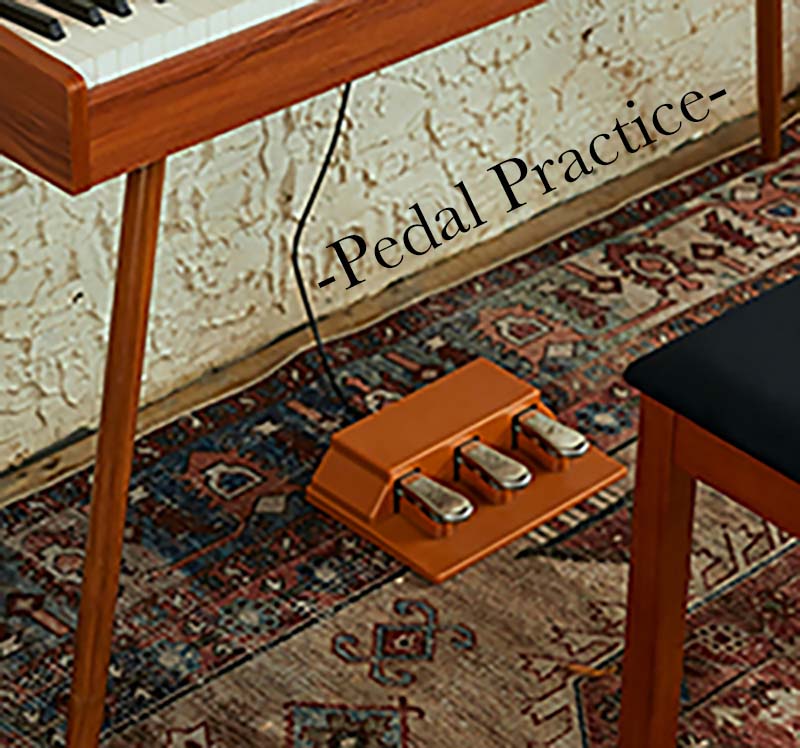
Piano Pedals: What do those other two do?
When you first start learning to play the piano, the keys take center stage. But there’s another trio on the lower half of the instrument that often goes unnoticed—the pedals. And while that one pedal all the way to the right (sustain) typically gets the most usage, each pedal on a piano has a distinct role in shaping the music you play, offering various effects that enhance the overall sound. Let’s dive into the roles of each piano pedal and how they can transform your performance.
The Right Pedal: Sustain Pedal (Damper Pedal)
The sustain pedal, also known as the damper pedal, is the most frequently used pedal on the piano. Positioned on the right, this pedal lifts all the dampers off the strings, allowing them to vibrate freely. Here’s what happens when you press the sustain pedal:
- Sustained Sound: Notes continue to sound even after you release the keys. This is essential for creating smooth, connected passages in your music, especially in legato playing.
- Richness and Resonance: The pedal adds a fuller, more resonant sound by allowing multiple strings to vibrate in sympathy with each other. This effect can make even simple chords sound lush and powerful.
The Middle Pedal: Sostenuto Pedal
The sostenuto pedal, found in the middle, is a bit of a mystery to many novice pianists. It’s not available on all pianos, but where it exists, it serves a unique purpose:
- Selective Sustain: Unlike the damper pedal, which sustains all notes, the sostenuto pedal only sustains the notes that are being held down when the pedal is pressed. This allows for selective sustain, useful in pieces where you need to sustain a chord or a single note while playing other notes staccato.
- Complex Passages: This pedal is particularly helpful in complex passages where you need to hold certain notes without sustaining everything else. It allows for greater control and clarity in your music.
The Left Pedal: Soft Pedal (Una Corda Pedal)
The soft pedal, or una corda pedal, is located on the left. This pedal alters the tone and volume of the piano:
- Softened Sound: When pressed, the hammers inside the piano shift slightly to the side, striking fewer strings (in grand pianos) or striking the strings with a softer part of the hammer (in upright pianos). This produces a softer, more muted sound.
- Expressive Dynamics: The soft pedal is perfect for creating nuanced dynamics and expressive, gentle passages. It allows you to play softly without losing the clarity of the notes.
Using Pedals Effectively
Understanding how each pedal functions is crucial, but knowing when and how to use them is what truly enhances your playing:
- Balance and Taste: Overusing the sustain pedal can lead to a muddy sound, while underusing it might make your music sound choppy. Balance is key.
- Context Matters: Different pieces and styles of music will require different uses of the pedals. Classical pieces often have specific pedal markings, while jazz and pop might allow more improvisation.
- Practice: Like any aspect of piano playing, effective pedal use comes with practice. Experiment with each pedal to understand its impact on your sound.
By mastering the roles and uses of each piano pedal, you can add depth, emotion, and complexity to your music. Whether you’re creating a resonant symphony with the sustain pedal, adding subtle nuances with the soft pedal, or navigating complex pieces with the sostenuto pedal, these tools are essential for any pianist looking to elevate their playing.
By understanding the roles of each piano pedal, you can unlock new dimensions in your piano playing. At Kim’s Piano, we offer a wide range of pianos and expert advice to help you make the most of your musical journey. Visit us at Kim’s Piano or call us at 714-828-1000 to learn more.
Recent Posts
- Same Country, Different DNA: Comparing Two of Japan’s Most Iconic Upright Pianos
- The Sound of Excellence: C. Bechstein Partners With the International Fryderyk Chopin Piano Competition
- How to Set Musical Goals and Actually Stick to Them This Year
- Kawai Hybrid Pianos: Tradition Meets Technology
- Piano Pedals: What do those other two do?
Categories
- Buyer Resources (19)
- Uncategorized (1)
Popular Posts
-
 December 29, 2021
December 29, 2021Should I Buy a Grand or an Upright Piano?
-
 September 29, 2022
September 29, 2022What levels of piano quality are there?
-
 October 16, 2022
October 16, 2022Is An Acoustic or Digital Piano Right For You?

